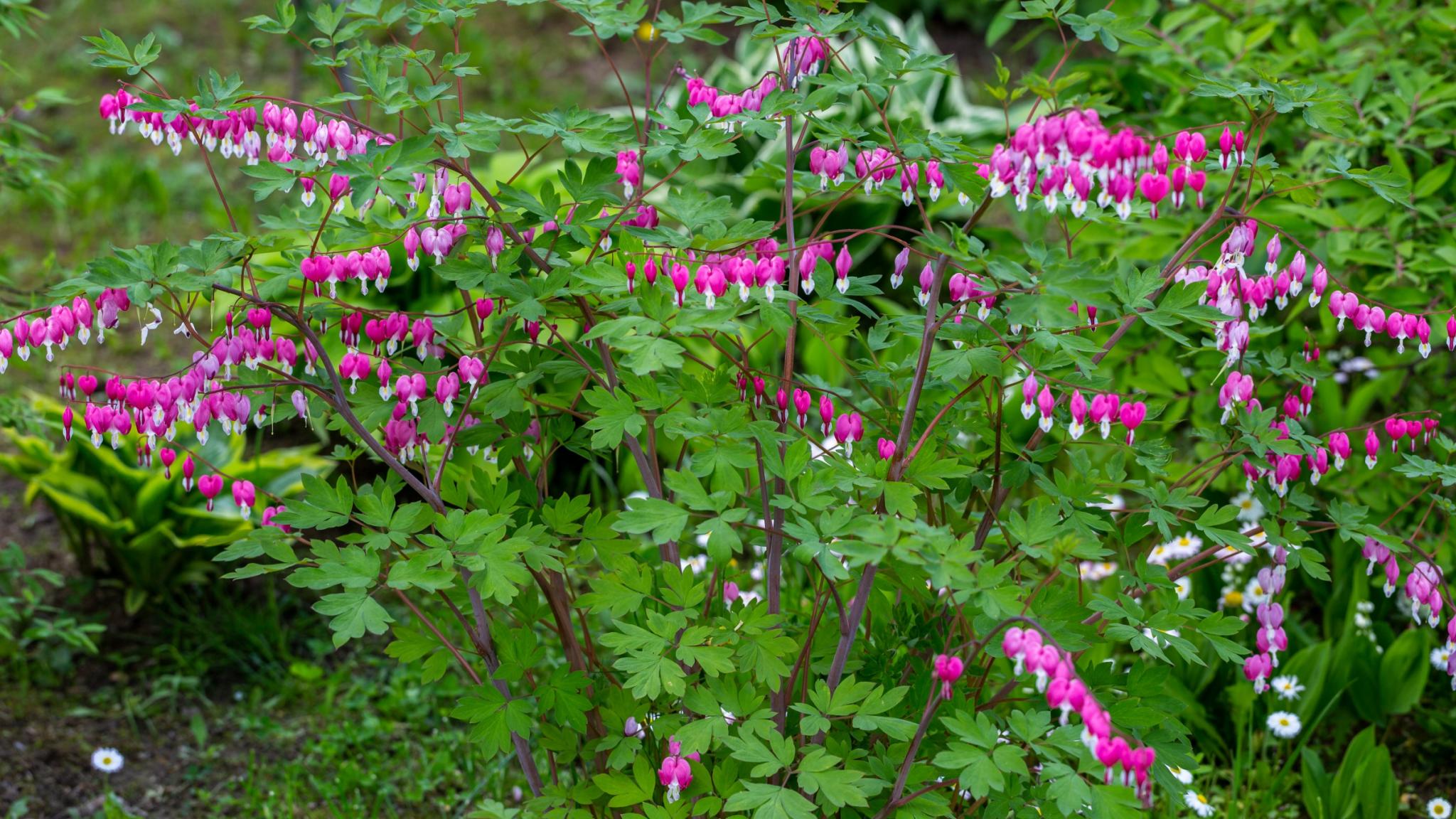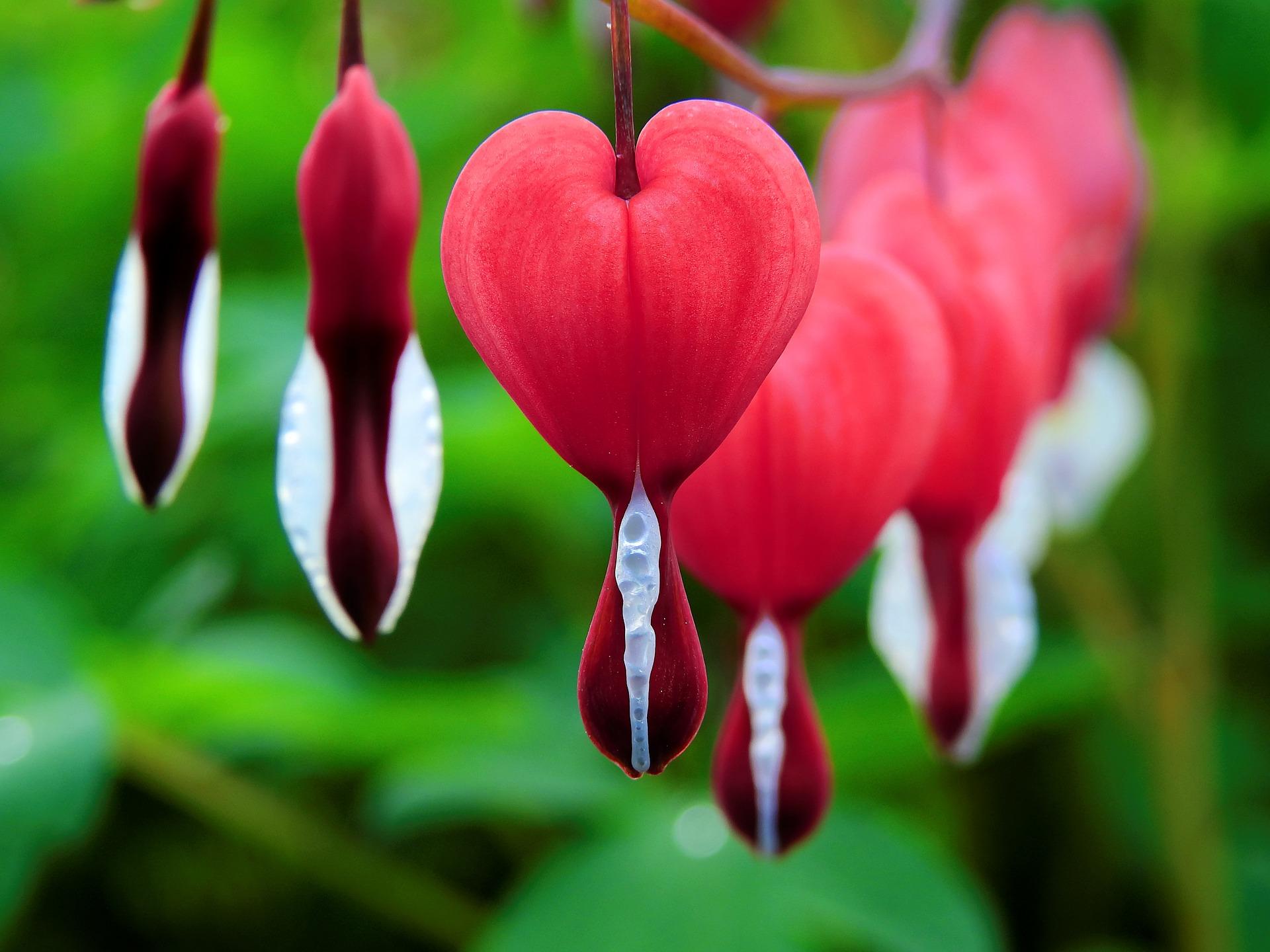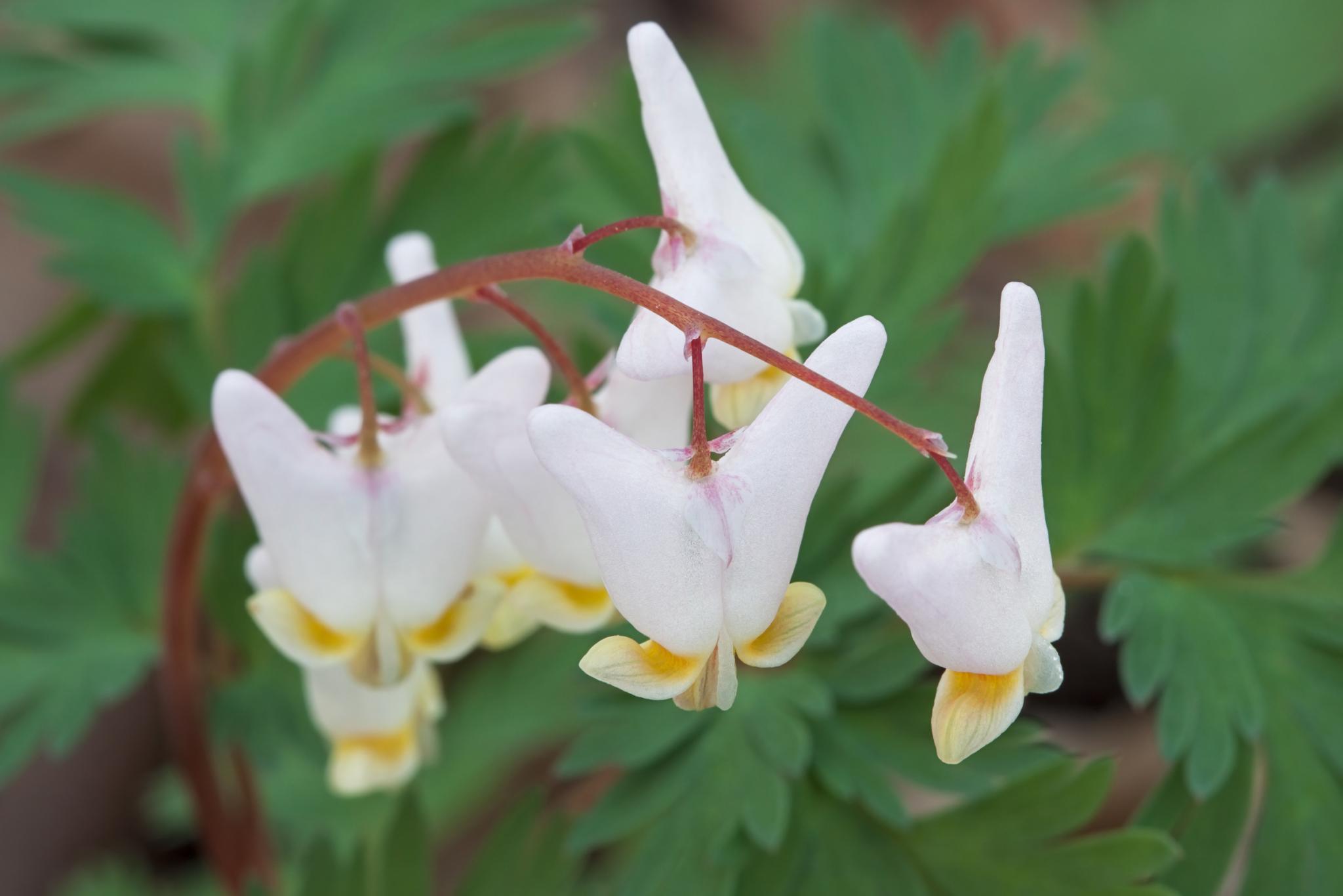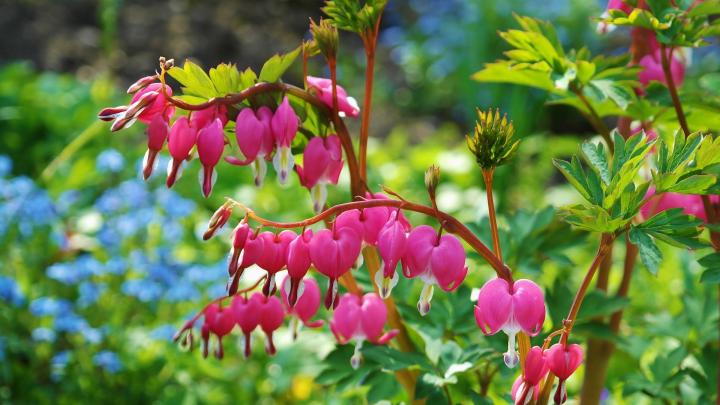The old-fashioned “bleeding heart” flower has long been a favorite perennial of the shady flower garden. This hardy plant blooms prolifically in early spring and finishes its growing cycle when warm weather sets in. Learn when to plant bleeding heart, how to care for it, and other tips in our growing guide.
About Bleeding Heart Flower
Once called the finest hardy plant of the 19th century, bleeding heart soon became as “common as a wallpaper pattern.” Today, this perennial is in favor because it is easy to grow and nothing surpasses its attention-getting form: graceful arching, 3-foot stems adorned with dangling pink, red, or white flower hearts. The hearts appear to be dripping (hence its most common name).
Blooming in the spring, bleeding heart will grow up to 2 feet high and up to 30 inches wide. It finishes its growing cycle when warm weather sets in. The flowers fade, the leaves die back, and the plant goes dormant in late spring or early summer.
Bleeding Hearts are woodland plants so they enjoy the partial shade of spring-flowering trees such as dogwoods and serviceberries. They won’t flower in deep shade. Near the house, mix with hostas and lamium for texture.

Image: S.O.E./Shutterstock














Comments